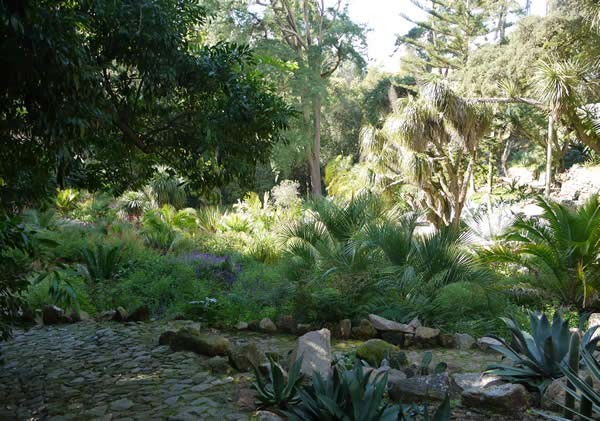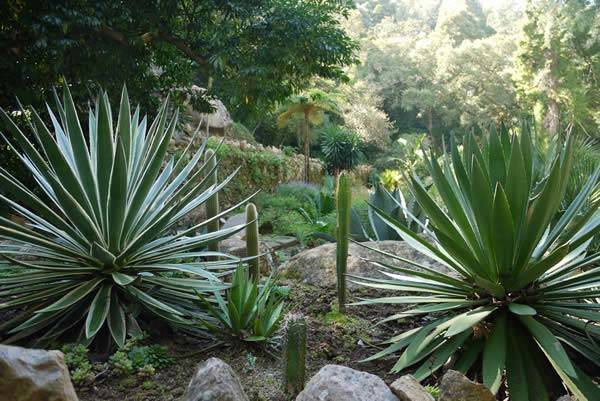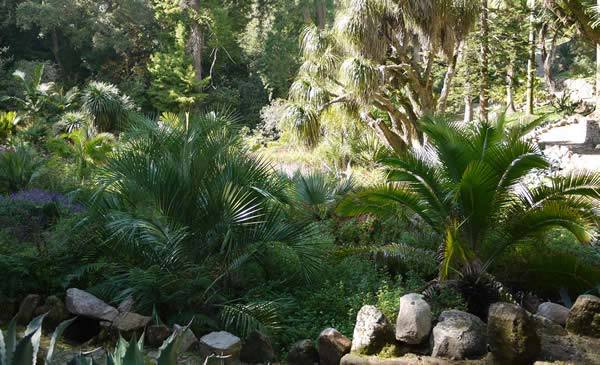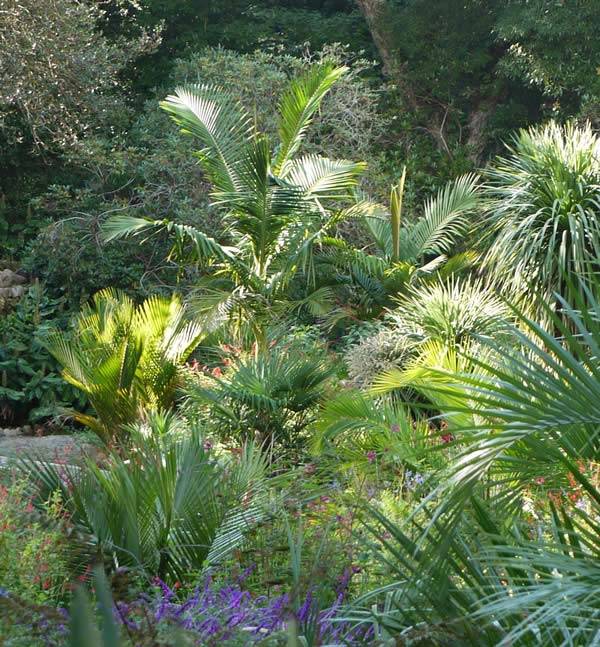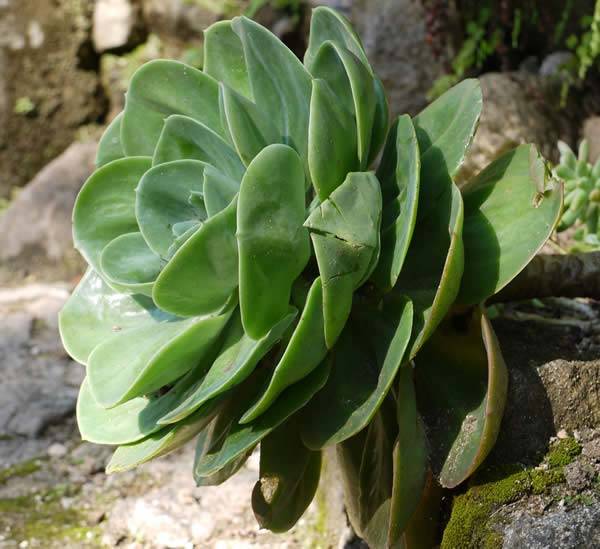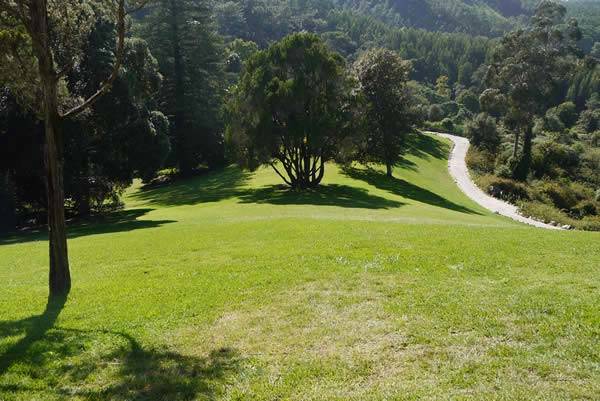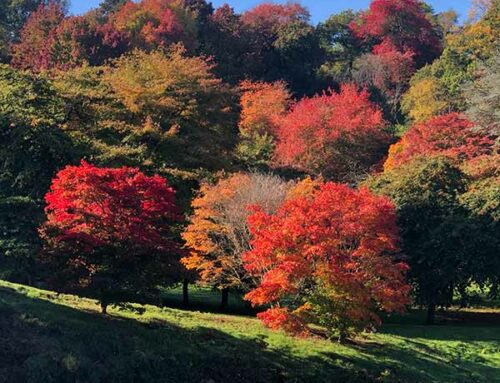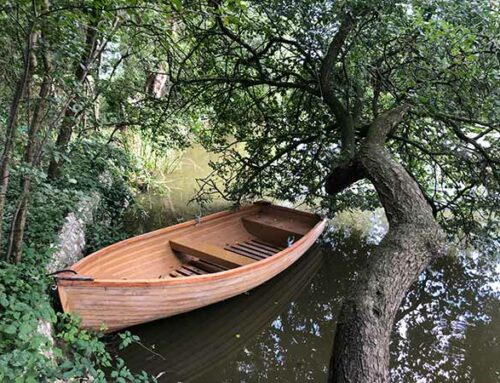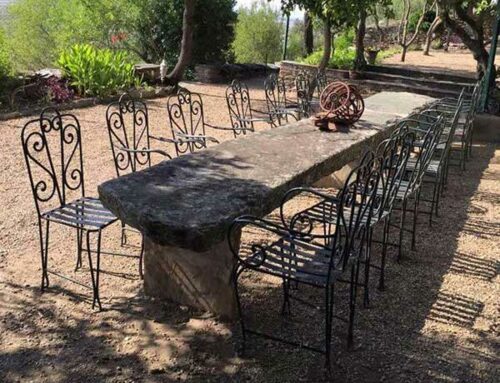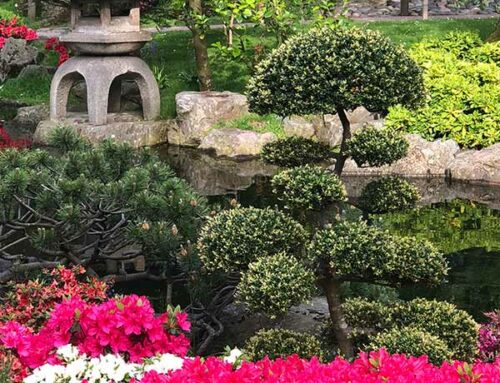In the lush, green, mountainous heart of Sintra, Portugal, lies the villa and park gardens of Monserrate, the essence of Portuguese romanticism but nonetheless, sculpted and landscaped by Englishmen.
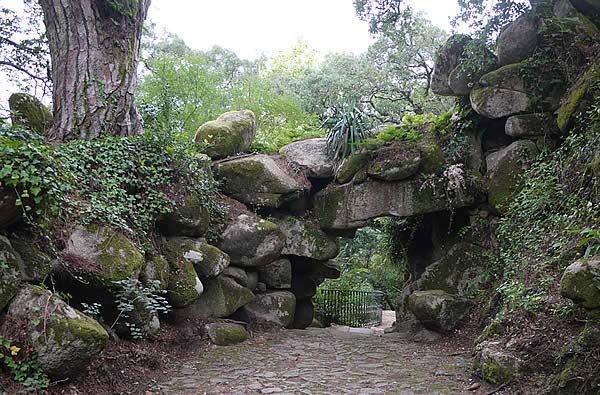
Vathek’s Arch, so named after a character in William Beckford’s novel
In a labour of love, the curators of this intoxicatingly romantic villa & gardens have been busy over the last decade restoring the grounds to their former glory. Their diligent efforts were acknowledged only last year, as Monserrate was awarded the honour of European Garden of the Year 2013.

One of the many stunning walkways of the gardens of Monserrate
It’s easy to see why these spectacular gardens are so acclaimed. Join us on our ramble through the grounds. With highlights are too many to list, we were however particularly taken with the tropical-themed Mexican gardens.
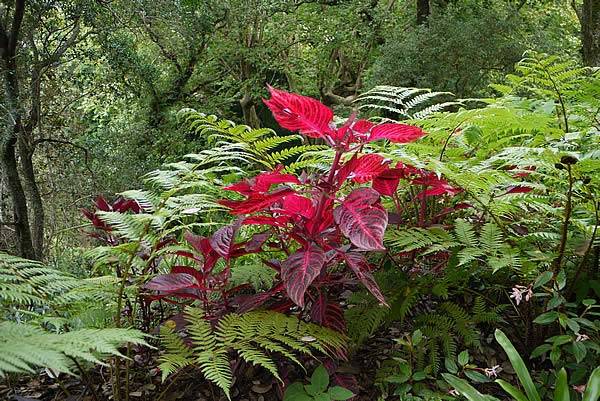
A spot of exotic colour among the many ferns
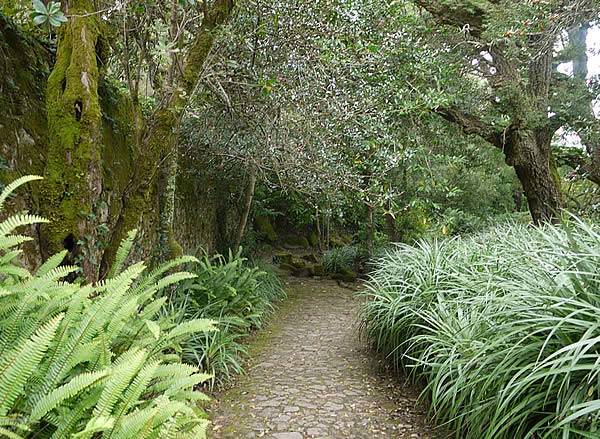
Ferns, Ornamental Grasses, Moss-covered Cork Oaks and hollies abound
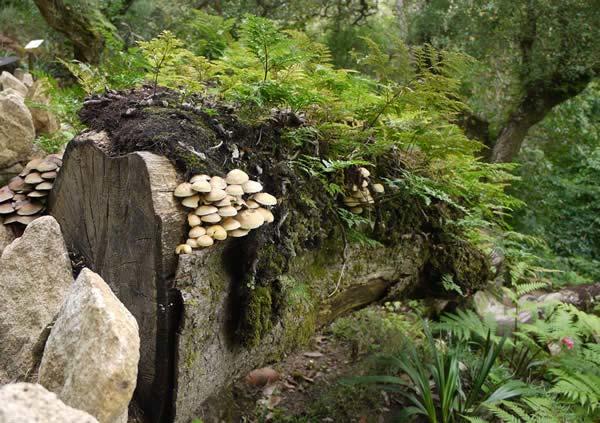
Much use is made of natural landscaping – a trunk is home to fungi and ferns
History of Monserrate:
The original villa was destroyed by the Lisbon earthquake in 1755. In the 1793, the estate was leased by William Beckford, a famous & extremely wealthy writer whom scandal forced to abandon the UK. Restoration work began promptly as did the landscaping of the amazing grounds and gardens. While in residence there, Beckford was driven to create a truly romantic garden, a living breathing 3-dimensional landscape painting. He added waterfalls, stone cromlechs and laid the foundations of today’s garden structure. 15 years later, Lord Byron paid a visit and was suitably inspired to immortalise the gardens in his poem Childe Harold’s Pilgrimage.
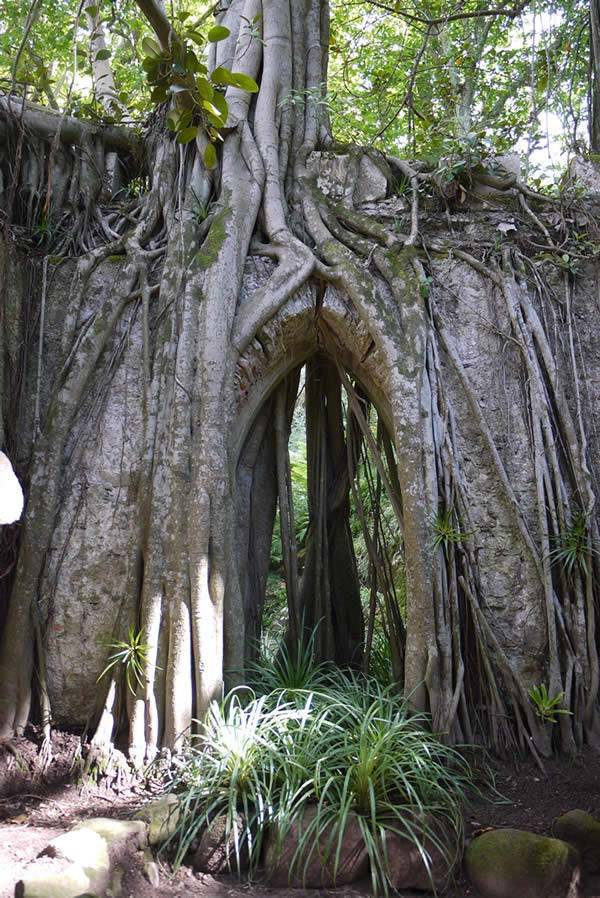
Chapel ruins used a dramatic landscape focal point by Francis Cook
In 1856, new owner Sir Francis Cook conceived and constructed the present romantic palace & gardens as a summer residence for his family. To help him, he cleverly enlisted the help of the head gardener of London’s Kew Gardens. The Kew gardener planted succulents (of which there are many), ornamental grasses, tropical ferns, tree ferns, conifers and innumerable exotic palm trees as well as camellias, Arbutus (native to the area) and of course lots of Cork Oak. There is a valley of tree ferns, waterfalls aplenty, ornamental lakes, the Mexican garden, the rose garden – to mention a few.
Today, with over 1,000 species of sub-tropical plants and trees framing what was the first lawn in Portugal; Monserrate is a vast exotic, botanical park & most probably, one of the most romantic gardens in Europe.
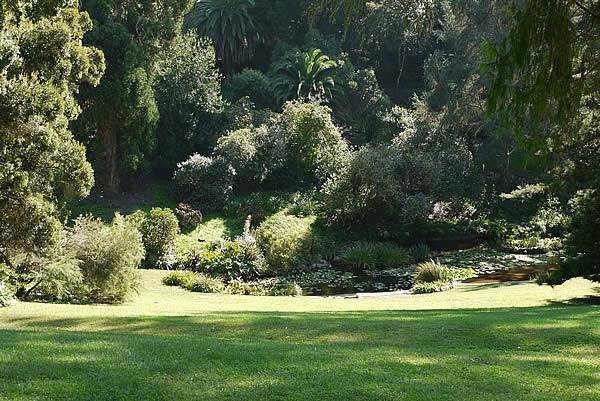
View over the lawns from the villa at Monserrate Gardens

